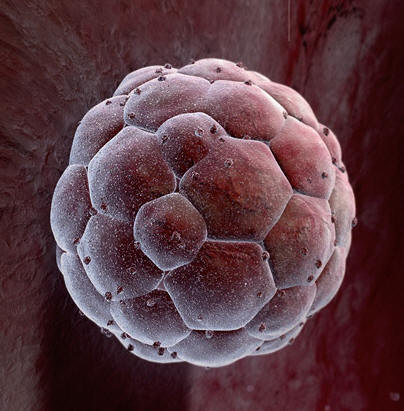 “I’ve had ’em burned off, cut off, x-rayed, you name it,” says former Australian lifeguard Don Bennewith of his skin cancers. Each adhesive dot represents a removed lesion. “I lost count at 532,” he says. With only minutes of sun exposure, skin cells stained with a fluorescent dye show signs of increasing DNA damage. The cells may repair such damage, but sometimes they fail and become cancerous.
“I’ve had ’em burned off, cut off, x-rayed, you name it,” says former Australian lifeguard Don Bennewith of his skin cancers. Each adhesive dot represents a removed lesion. “I lost count at 532,” he says. With only minutes of sun exposure, skin cells stained with a fluorescent dye show signs of increasing DNA damage. The cells may repair such damage, but sometimes they fail and become cancerous.
Tom Stevens sits across from me at a cafe in a small town in upstate New York. He has a handsome face and a powerful build. But his ears are stubs tucked tightly to the sides of his head, and when he takes off his baseball cap, I see that his scalp, except for a thin strip, is a mass of scar tissue.
“I lost my helmet somewhere in the house trailer just before the flashover hit,” says Stevens. “It was about 2,000 degrees Fahrenheit (1,093 degree Celsius) in there when I jumped out the window.”
Five years ago Stevens was a volunteer firefighter. Now, preparing for his sixth major reconstructive surgery, he laughs. “I’m learning more about skin than I ever wanted to know.”
If you took off your skin and laid it flat, it would cover an area of about 21 square feet (2 square meters), making it by far the body’s largest organ. Draped in place over our bodies, skin forms the barrier between what’s inside us and what’s outside. It protects us from a multitude of external forces. It serves as an avenue to our most intimate physical and psychological selves.
This impervious yet permeable barrier, less than a millimeter thick in places, is composed of three layers. The outermost layer is the bloodless epidermis. The dermis includes collagen, elastin, and nerve endings. The innermost layer, subcutaneous fat, contains tissue that acts as an energy source, cushion, and insulator for the body.
From these familiar characteristics of skin emerge the profound mysteries of touch, arguably our most essential source of sensory stimulation. We can live without seeing or hearing—in fact, without any of our other senses. But babies born without effective nerve connections between skin and brain can fail to thrive and may even die.
Laboratory experiments decades ago, now considered unethical and inhumane, kept baby monkeys from being touched by their mothers. It made no difference that the babies could see, hear, and smell their mothers; without touching, the babies became apathetic and failed to progress. Deprived of their mothers, they did not explore as young primates normally do; rather they “threw themselves prone on the chamber floor, crying and grimacing all the time, or huddled against a chamber wall, rocking back and forth with their hands over their heads or faces,” according to one report.
For humans insufficient touching in early years can have lifelong results. “In touching cultures, adult aggression is low, whereas in cultures where touch is limited, adult aggression is high,” writes Tiffany Field, director of the Touch Research Institutes at the University of Miami School of Medicine. Studies of a variety of cultures show a correspondence between high rates of physical affection in childhood and low rates of adult physical violence.
While the effects of touching are easy to understand, the mechanics of it are less so. “Your skin has millions of nerve cells of various shapes at different depths; explains Stanley Bolanowski, a neuroscientist and associate director of the Institute for Sensory Research at Syracuse University. “When the nerve cells are stimulated, physical energy is transformed into energy used by the nervous system and passed from the skin to the spinal cord and brain. It’s called transduction, and no one knows exactly how it takes place.” Suffice it to say that the process involves the intricate, split-second operation of a complex system of signals between neurons in the skin and brain.


